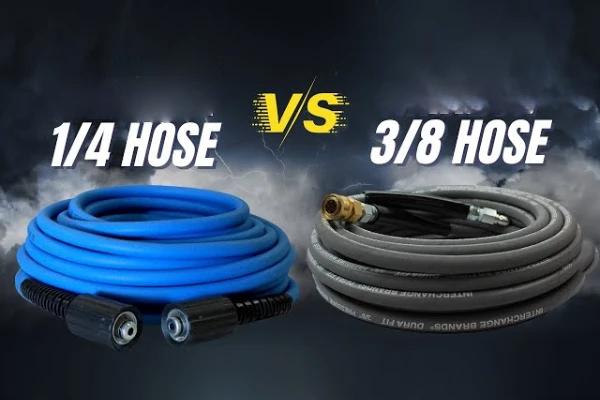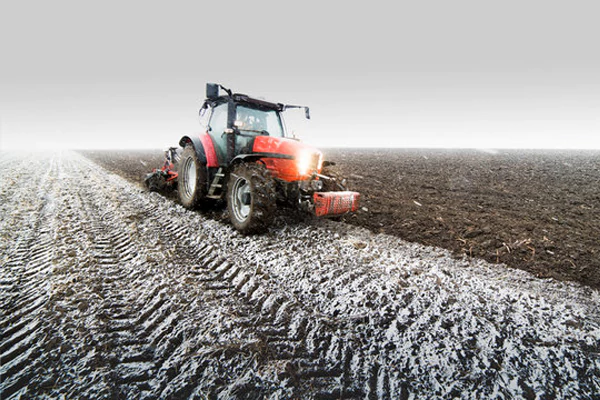Delve into the world of hydraulic hoses as we discuss their different types, price ranges, factors influencing their prices, and much more. This comprehensive guide to the hydraulic hose price list will arm you with the knowledge to make informed purchasing decisions.
Before diving into the depths of the hydraulic hose price list, let’s first understand what hydraulic hoses are. As critical components of hydraulic systems used in various machines and vehicles, these hoses transport hydraulic fluid under pressure to different parts of the system.
The price of hydraulic hoses varies based on factors like type, brand, size, material, temperature, and pressure ratings, among others. In this article, we’ll explore all these aspects in detail, helping you to understand and navigate the complex world of hydraulic hose prices.
Understanding Hydraulic Hoses
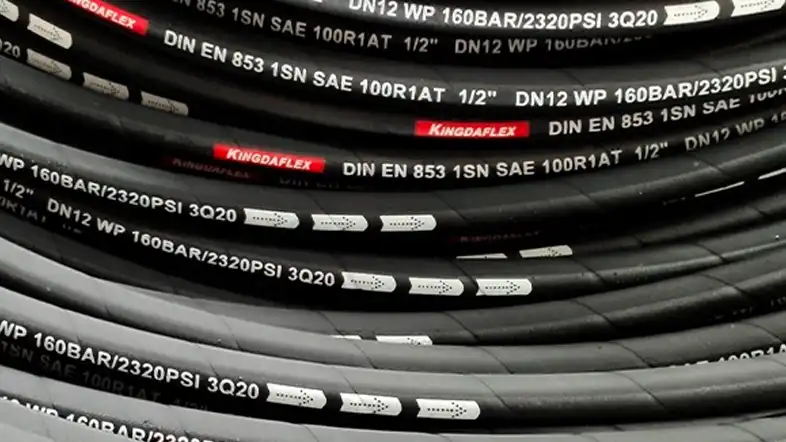
Hydraulic hose is flexible tubes designed to carry hydraulic fluid. Their core function is to transport fluid from one component of the system to another, enabling efficient power transmission. Hydraulic hoses are typically made of three parts: an inner tube that carries the fluid, a reinforcement layer for stability, and a protective outer layer.
The material of these layers may vary based on the application, and consequently, this can impact the price of the hydraulic hose.
Factors Influencing Hydraulic Hose Prices

Different aspects play a role in the overall pricing of hydraulic hoses. Some of the major factors are:
- Type: The specific type of hydraulic hose impacts its price. For instance, high-pressure hoses typically cost more than low-pressure ones.
- Brand: The reputation and quality assurance from well-known brands often come with a higher price tag.
- Size: Both the length and diameter of the hose can significantly influence its price.
- Material: The materials used for the inner tube, reinforcement layer, and outer layer all play a role in determining the cost.
- Temperature Rating: Hoses designed to withstand extreme temperatures usually have a higher price.
- Pressure Rating: Hoses with a high-pressure rating can command a premium price.
In the following sections, we will discuss each of these factors in detail, offering a complete picture of the hydraulic hose price list.
The Price Impact of Hose Size and Length
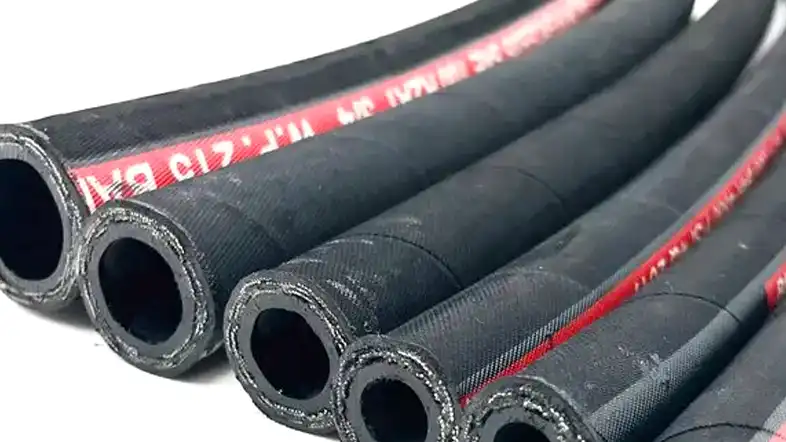
When exploring the hydraulic hose price list, one of the most influential factors you’ll come across is the size of the hose. The size of a hydraulic hose is not merely a dimension but an important parameter that dictates its functionality and, by extension, its cost. The size of a hydraulic hose is typically determined by two attributes: the length and the diameter, each playing a critical role in its operation and pricing.
The Diameter
The diameter or the width of a hydraulic hose is a crucial factor that determines the volume of fluid it can transport at any given time. Hoses with a larger diameter can carry more fluid, enabling the machinery to perform more powerful operations. On the contrary, smaller diameter hoses are suited for lighter tasks.
Larger diameter hoses involve more material in their construction, which increases their production cost. Consequently, these hoses are typically more expensive than their smaller counterparts. The diameter is often measured in inches or millimeters, and the increase in price is typically proportional to the increase in diameter.
The Length
The length of a hydraulic hose is just as significant when determining the price. Long hoses provide the flexibility to connect components that are far apart and are essential in large machinery and complex hydraulic systems. However, longer hoses also mean more material usage, more labor in manufacturing, and increased transportation costs, all contributing to a higher price.
Like diameter, the length is also typically measured in feet or meters, and the price usually increases linearly with the length. However, keep in mind that excessively long hoses can lead to pressure losses and decreased system efficiency, which may increase operational costs in the long run.
Balancing Size and Cost
Understanding the price impact of hose size and length can help you make informed decisions when perusing the hydraulic hose price list. However, it’s crucial not to let price be the only guiding factor. The size of the hose should primarily be dictated by the requirements of your hydraulic system to ensure optimal performance and safety.
Purchasing a hose that’s not suitable for your system, even if it’s cheaper, could lead to system inefficiencies, potential damages, and increased maintenance costs over time. Therefore, it’s a balancing act of choosing the right size for your needs while also considering the initial and long-term costs.
Remember, the best hydraulic hose isn’t necessarily the most expensive one but the one that meets your specific needs most efficiently and effectively.
Price Fluctuations in the Hydraulic Hose Market
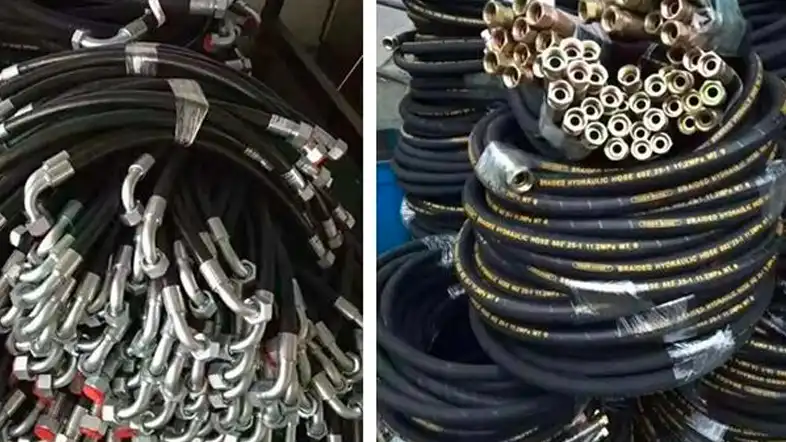
The hydraulic hose price list isn’t set in stone. Like any market product, the price of hydraulic hoses is subject to fluctuations. These variations are influenced by a multitude of factors, including material costs, demand and supply dynamics, global economic health, currency exchange rates, and more. Understanding these fluctuations can help you make better-informed purchasing decisions and potentially save money.
Material Costs
One of the major factors contributing to the price fluctuations of hydraulic hoses is the cost of raw materials. These hoses are typically made from materials like synthetic rubber, thermoplastics, or elastomers. If the costs of these materials increase due to scarcity, production issues, or increased demand in other sectors, it directly impacts the price of the hoses.
Demand and Supply Dynamics
The law of demand and supply plays a significant role in determining the price of hydraulic hoses. In times of high demand, such as during industrial booms, the prices can spike. Conversely, during periods of reduced industrial activity, the demand might decline, leading to a decrease in prices.
Global Economic Health
The global economic situation has a considerable impact on the hydraulic hose price list. Economic uncertainties or downturns often lead to reduced industrial activity, which can lower demand and, consequently, the prices of hydraulic hoses. On the other hand, a healthy economy boosts industrial production, increasing the demand and potentially the prices of hydraulic hoses.
Currency Exchange Rates
Since many of the raw materials or even the finished hydraulic hoses are imported or exported, currency exchange rates also influence their prices. A stronger domestic currency makes imported materials or hoses cheaper, potentially reducing the prices. Conversely, a weaker domestic currency makes imports more expensive, increasing the prices.
Strategic Buying
Understanding these factors can help you strategically plan your hydraulic hose purchases. For instance, if you foresee an industrial boom, it might be beneficial to stock up on hydraulic hoses in advance before the prices spike. On the other hand, in times of economic downturns, it might be wise to hold off on large purchases if possible, until the prices drop.
However, it’s important to remember that price shouldn’t be the only consideration when buying hydraulic hoses. Quality, suitability for your system, and vendor reliability are equally important considerations that can affect the overall value and cost-effectiveness of your purchase. After all, a cheaper hose that fails prematurely or doesn’t suit your system can end up costing more in the long run due to downtime and replacement costs.
The Role of Temperature Ratings in Pricing
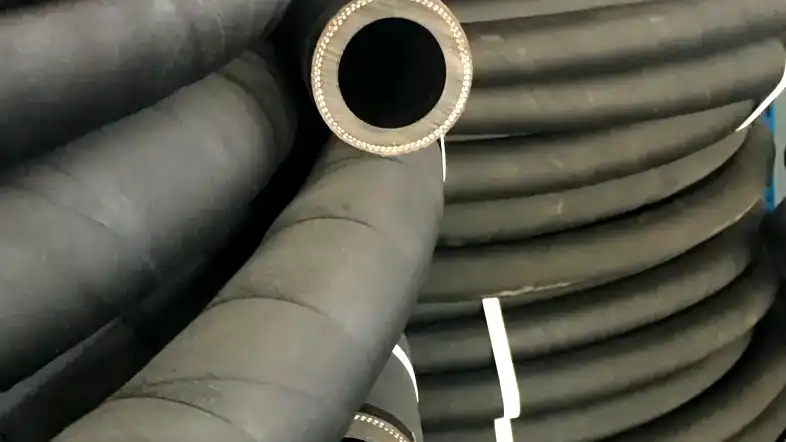
Temperature ratings are another significant component that can influence the hydraulic hose price list. The temperature a hydraulic hose can withstand without any degradation in its performance or safety is of critical importance in numerous applications. Consequently, the temperature rating is often directly proportional to the price of the hydraulic hose.
Understanding Temperature Ratings
The temperature rating of a hydraulic hose refers to the range of temperatures, typically expressed in degrees Celsius or Fahrenheit, that the hose can safely withstand. This range includes two key parameters: the minimum and maximum temperatures.
Hoses with a higher temperature rating can withstand more extreme temperatures, making them suitable for high-temperature applications, such as those found in heavy machinery or certain industrial processes. Conversely, hoses with a lower temperature rating are suitable for applications with milder temperature conditions.
Manufacturing High-Temperature Hoses
Producing hoses that can withstand higher temperatures requires special materials and manufacturing processes. Materials like high-grade synthetic rubber or thermoplastics that can resist degradation at high temperatures are often more expensive. Additionally, the manufacturing processes may require more sophisticated techniques and equipment, further adding to the cost.
Pricing Implications
Due to these additional requirements, hydraulic hoses with higher temperature ratings are typically more expensive. When you peruse a hydraulic hose price list, you’ll often find that the prices increase as the temperature rating increases.
Balancing Temperature Ratings and Cost
As with other aspects of hydraulic hose selection, it’s important to balance the temperature requirements with the cost. Choosing a hose with a higher temperature rating than necessary can lead to unnecessary costs. On the other hand, selecting a hose with a lower temperature rating for a high-temperature application can result in hose failure and potential safety risks.
Therefore, it’s crucial to understand the temperature requirements of your specific application before purchasing a hydraulic hose. While the initial cost might be higher for a hose with a high-temperature rating, the longer service life and enhanced safety can make it a more cost-effective choice in the long run.
Remember, the best investment isn’t necessarily the cheapest hose but the one that meets all the requirements of your application, including the temperature rating, most effectively.
Tips to Save Money on Hydraulic Hoses

While purchasing a hydraulic hose is an essential investment, the costs can add up, especially for large-scale operations or frequent replacements. Understanding the various aspects that influence the hydraulic hose price list is one part of the equation. The other is to know how you can potentially save money without compromising the performance or safety of your hydraulic systems.
Understand Your Requirements
Before making any purchase, the first step should be a comprehensive understanding of your needs. This includes the type of hydraulic hose, its size, temperature rating, pressure rating, and other specifications required for your specific application. Purchasing a hose that doesn’t meet your requirements could lead to premature failure, requiring replacement sooner and thereby increasing your costs.
Quality Over Price
While it’s tempting to opt for the cheapest option in the hydraulic hose price list, it may not always be the most cost-effective choice. Cheaper hoses may not be as durable or reliable, leading to frequent replacements, downtime, and potential damage to your hydraulic system. Investing in high-quality hoses may involve a higher upfront cost but can save money in the long run due to longer service life and fewer replacements.
Regular Maintenance
Regular inspection and maintenance of your hydraulic hoses can significantly extend their life, saving you replacement costs. Look for signs of wear and tear, leaks, or any changes in performance. Proactive maintenance allows you to address minor issues before they become major problems, thus preventing costly repairs or replacements.
Buy in Bulk
For large-scale operations or if you need multiple hoses of the same type, buying hydraulic hose in bulk could offer cost benefits. Suppliers often provide discounts for bulk purchases, reducing the per-unit cost of the hoses. However, ensure that you have appropriate storage conditions to prevent any damage to the hoses during storage.
Choose the Right Hydraulic Hose Supplier

Finally, choosing the right hydraulic hose supplier can also help save money. A reputable hose supplier can provide you with high-quality products at competitive prices. They can offer expert advice on choosing the right hoses for your needs, ensuring you don’t overspend on unnecessary features. They may also provide after-sales support, including installation assistance and warranty, which can save costs on potential repairs or replacements.
Remember, while saving money is essential, it should not compromise the safety and efficiency of your hydraulic system. The goal is to achieve the best balance between cost-effectiveness and optimal performance. By understanding your requirements and making informed decisions, you can ensure that every dollar spent on hydraulic hoses is a worthwhile investment.
Frequently Asked Questions
What is the typical price range for hydraulic hoses?
The price of hydraulic hoses can vary greatly depending on several factors like type, size, brand, material, temperature and pressure ratings. It’s common to find hoses priced anywhere from $10 to several hundred dollars.
Why do hydraulic hose prices vary so much?
The prices vary due to factors like brand reputation, type of hose, size, material used, temperature rating, and pressure rating. For example, hoses designed to withstand high pressures and extreme temperatures are more expensive than those meant for lower pressures and temperatures.
Is it worth paying more for a premium brand?
Premium brands often offer higher quality, reliability, and better customer service. However, whether the higher cost is justified depends on your specific needs and budget.
Can I negotiate the price of hydraulic hoses?
Yes, especially when buying in bulk or from a wholesaler. Some suppliers may also offer discounts to repeat customers.
How can I save money on hydraulic hoses?
You can save money by buying in bulk, negotiating prices, comparing different suppliers, and maintaining your hoses properly to extend their lifespan.
Are expensive hydraulic hoses always better?
Not necessarily. While price can be an indicator of quality, it’s essential to consider other factors like your specific needs, the hose’s features, and the reputation of the brand. It’s possible to find good quality hoses at affordable prices.
Conclusion
Understanding the complexities of a hydraulic hose price list can seem daunting. However, with the knowledge of what influences the pricing and how to navigate these factors, you can make more informed decisions and potentially save money.
Remember, the price is just one aspect to consider. Quality, durability, and suitability for your specific needs are just as crucial, if not more.



